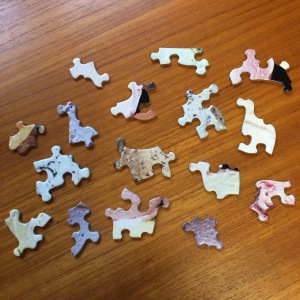I thought of this when working on a puzzle that had the most non-traditional shaped pieces that I have seen. It stretched my imagination and ingenuity to blend these pieces into the picture, but, of course, they were necessary to complete it. The same can be true when talking about people instead of pieces.
Think about where you fit on the tolerance scale. Are you only comfortable with “differences” that are of the standard variety or are you able to embrace those which are outside your usual experiences? How can you intentionally seek out pieces that are more varied and come to appreciate the richness they bring to your puzzle? Can you learn to see puzzles as coming in a multitude of shapes and avoid the traditional/non-traditional labels?
It may not feel like it initially, but even shapes that you have not worked with before still fit side by side with your common variations and are the only way to make your picture complete.

No comments:
Post a Comment